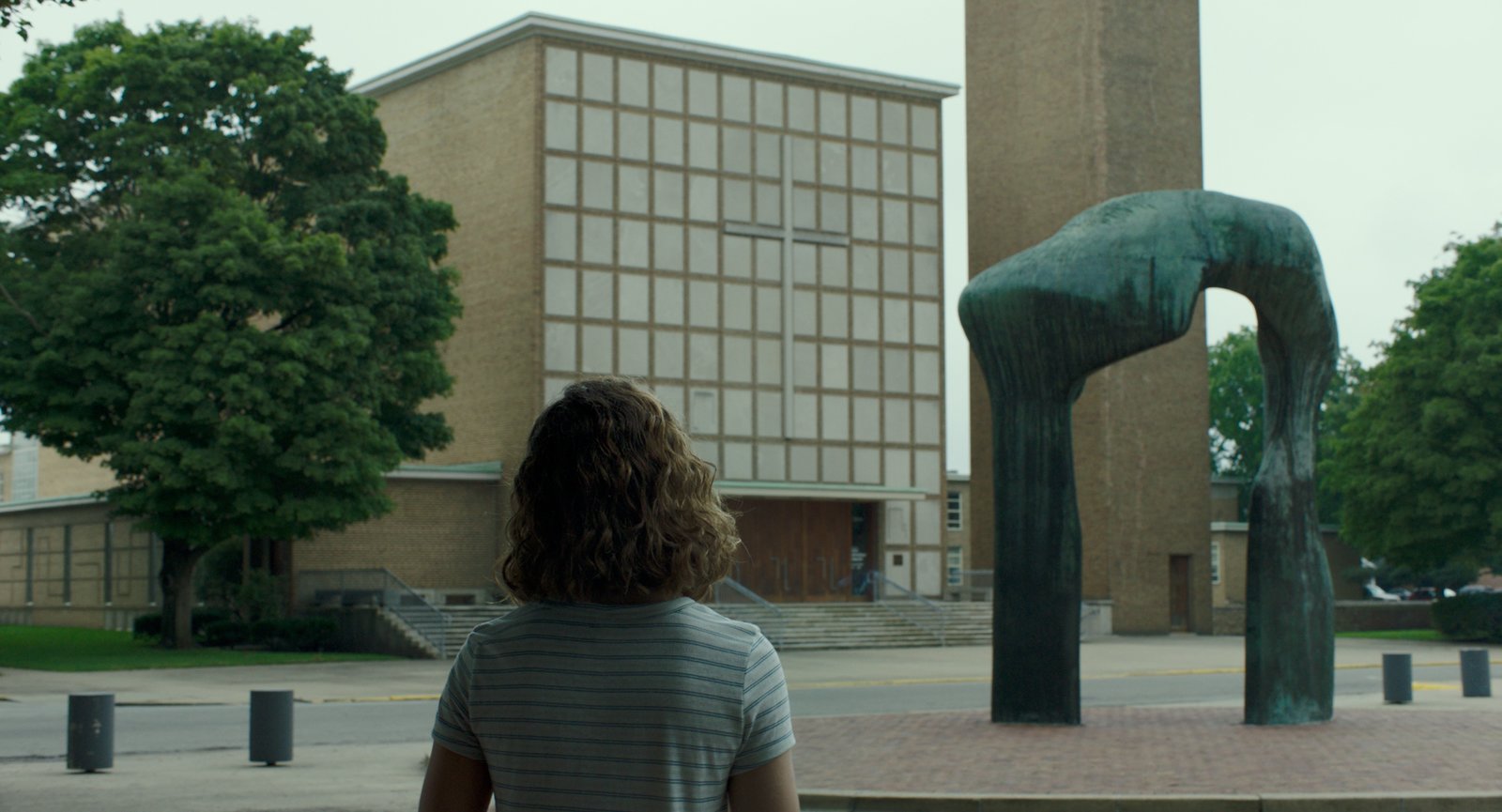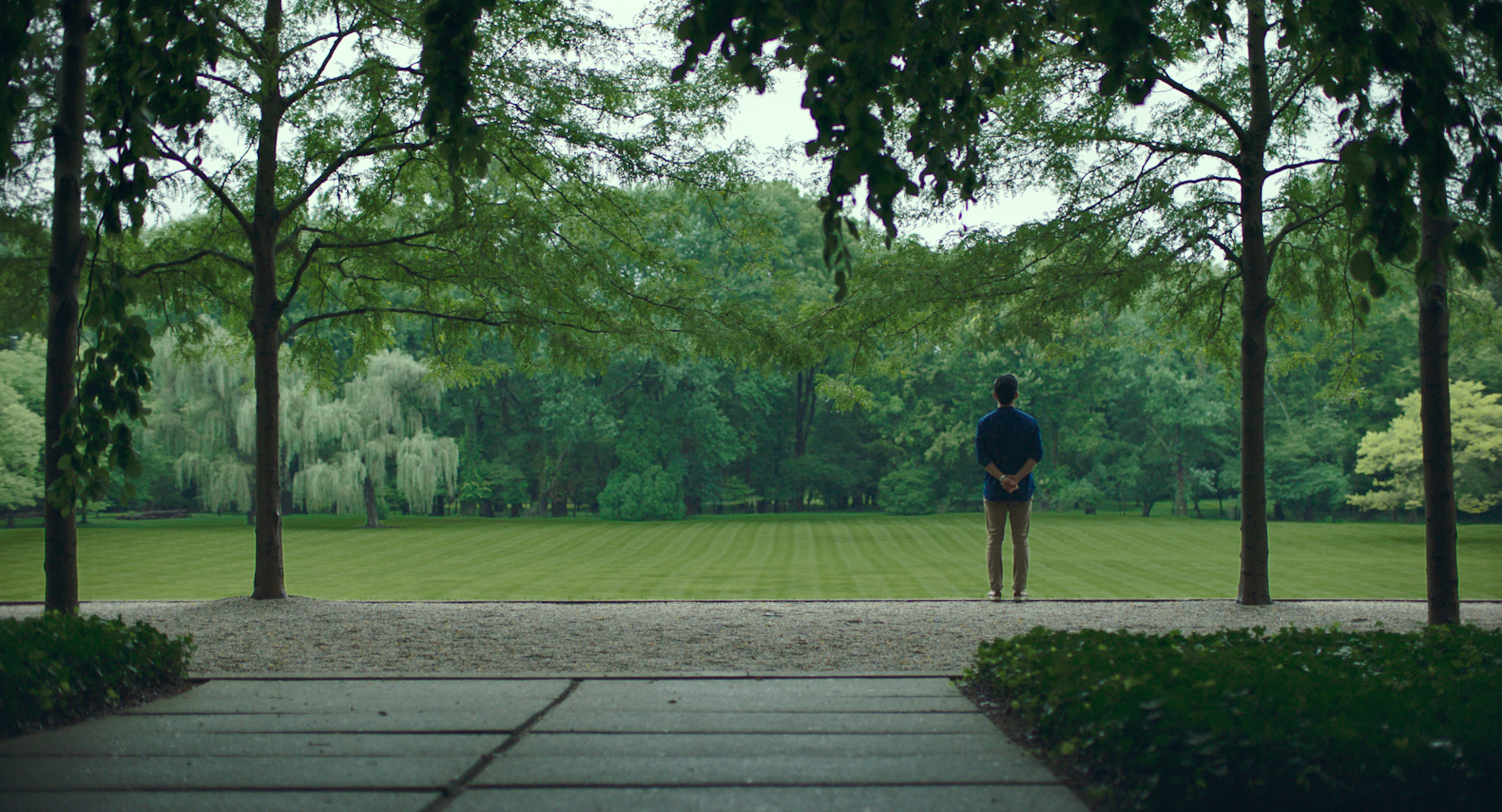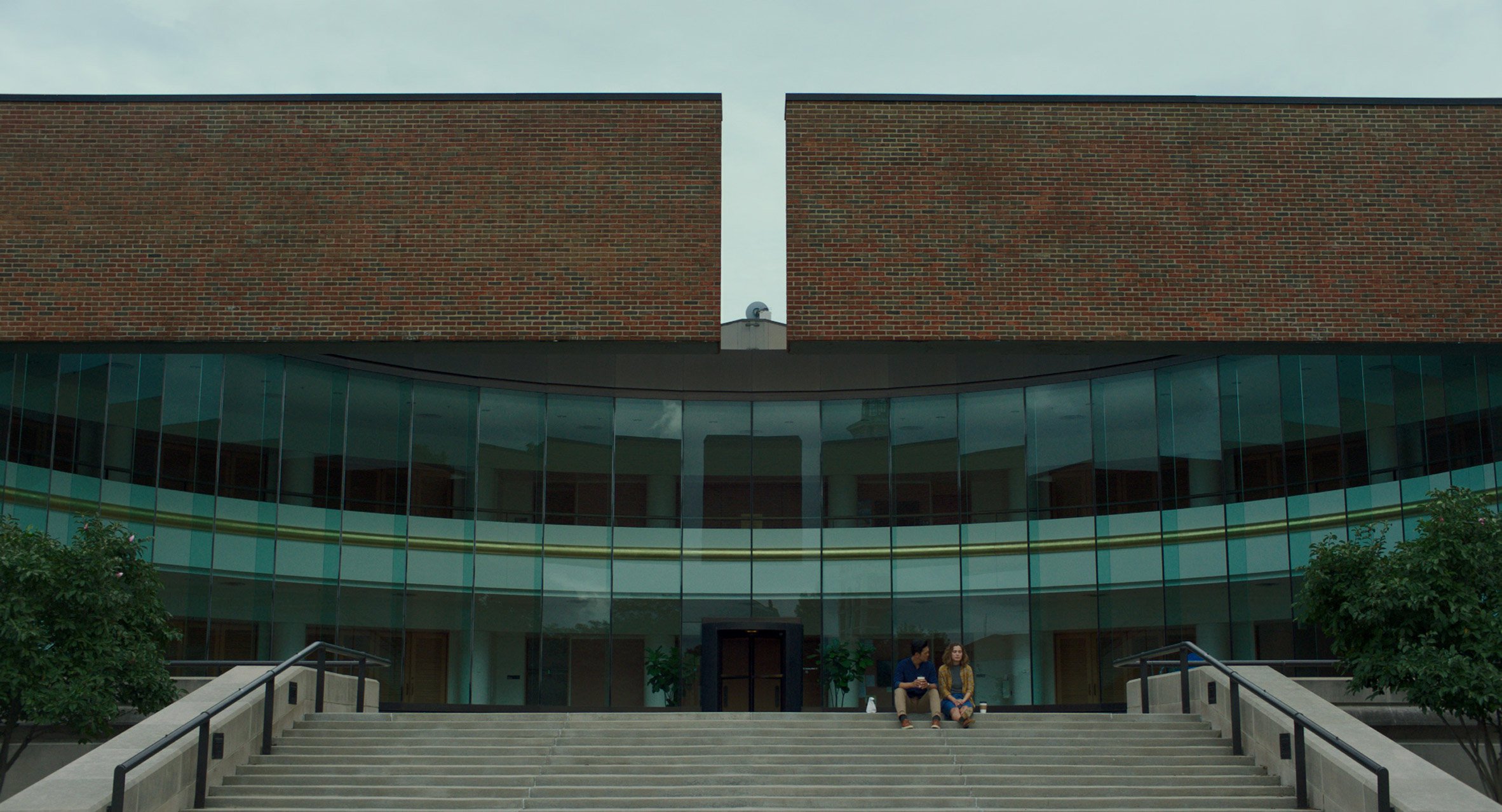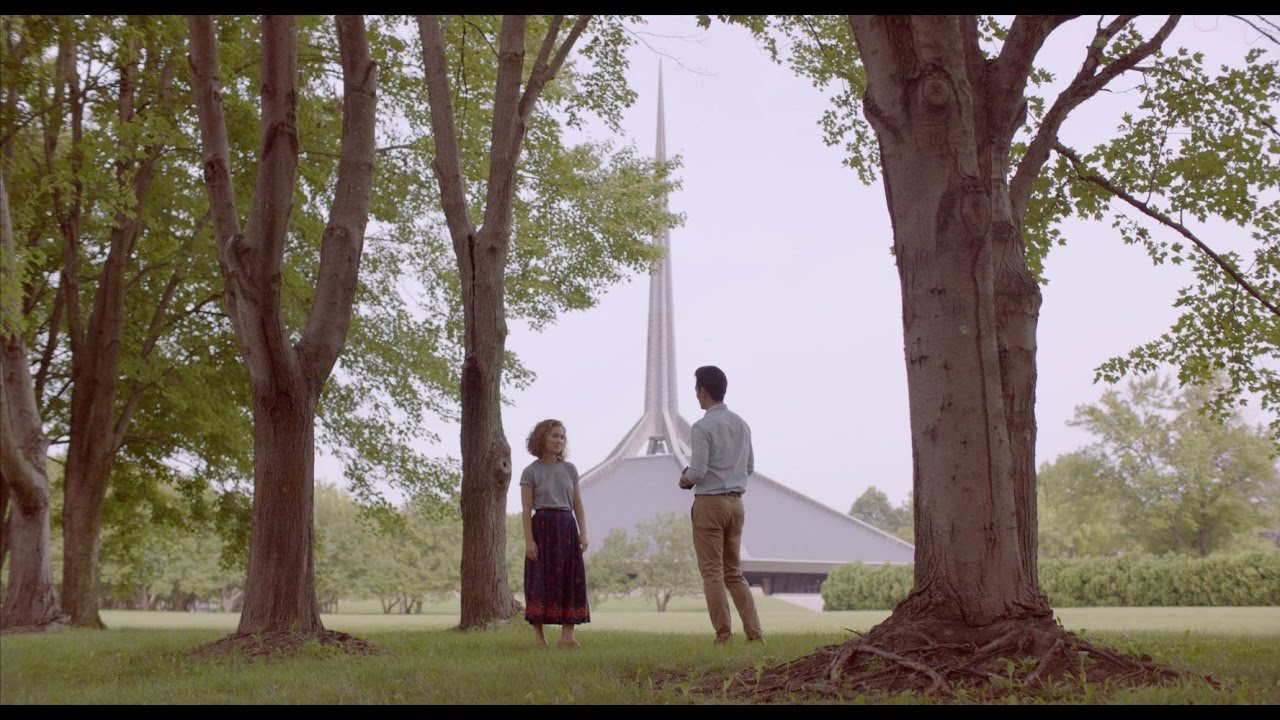Columbus, Indiana is a town of less than 50,000, located about halfway between Indianapolis and Louisville, that happens to boast enough modernist architecture that its visitor’s guide includes tours of the iconic structures. It’s an improbable fact, a mecca of modernism in the heartland, that long-time video essayist / first-time director / one-name-haver Kogonada relishes in Columbus, one of the absolute best films of 2017 that I didn’t see until 2018.
It’s difficult — I’d argue impossible — to separate this debut feature from the numerous influences Kogonada has visually  analyzed at lengths short and shorter for Sight & Sound. The critic-turned-filmmaker is one of our more cherished notions, at least since the French New Wave exploded off the pages of journals and changed cinema forever, and Kogonada is a worthy heir to the tradition. No one really likes the writer’s crutch of dredging up disparate sources for comparison, magically encapsulating tendencies. (“It’s like Tarkovsky and David Bowie had a baby, in a room that Rimbaud grew up in and also the doctor was John Cage and he had recently been crashing on David Lynch’s couch and Patti Smith hated it.”). But in Columbus, the two presences that most make themselves felt are Ozu and Linklater — the silent, geometric, measured and the restless, grasping, shaggy. This is no accident. (And not just because the director’s name is “a clever heteronymous tribute to Yasujirō Ozu’s screenwriting partner, Kōgo Noda” and he made a terrific short about the Talky Texan, which hopefully is how Linklater enjoys being referenced.)
analyzed at lengths short and shorter for Sight & Sound. The critic-turned-filmmaker is one of our more cherished notions, at least since the French New Wave exploded off the pages of journals and changed cinema forever, and Kogonada is a worthy heir to the tradition. No one really likes the writer’s crutch of dredging up disparate sources for comparison, magically encapsulating tendencies. (“It’s like Tarkovsky and David Bowie had a baby, in a room that Rimbaud grew up in and also the doctor was John Cage and he had recently been crashing on David Lynch’s couch and Patti Smith hated it.”). But in Columbus, the two presences that most make themselves felt are Ozu and Linklater — the silent, geometric, measured and the restless, grasping, shaggy. This is no accident. (And not just because the director’s name is “a clever heteronymous tribute to Yasujirō Ozu’s screenwriting partner, Kōgo Noda” and he made a terrific short about the Talky Texan, which hopefully is how Linklater enjoys being referenced.)
 The narrative is true to both. Jin (John Cho) comes to Indiana to attend to his ailing dad, an architecture luminary who’s fallen ill while in town to speak at a conference. He doesn’t much want to be there, professing a distaste for his father’s lifelong passion and a need to get back to work. (He’s a translator, between worlds.) He meets Casey (Haley Lu Richardson), who’s lived there all her life, and isn’t certain she wants to go anywhere else. She’d wanted to go to his dad’s talk, it turns out. Studious and funny, she’s also semi-parenting her own mom, who has addiction issues. She works at the library and smokes a lot.
The narrative is true to both. Jin (John Cho) comes to Indiana to attend to his ailing dad, an architecture luminary who’s fallen ill while in town to speak at a conference. He doesn’t much want to be there, professing a distaste for his father’s lifelong passion and a need to get back to work. (He’s a translator, between worlds.) He meets Casey (Haley Lu Richardson), who’s lived there all her life, and isn’t certain she wants to go anywhere else. She’d wanted to go to his dad’s talk, it turns out. Studious and funny, she’s also semi-parenting her own mom, who has addiction issues. She works at the library and smokes a lot.
Is this too twee? Will you be reassured to learn that Jin and Casey flee their individual prisons of care to go look at buildings? No?
Well, they do. And it is in these segments that Columbus lays bare its heart – a very good thing, given that these segments effectively constitute the film.
The two not-quite lovebirds toy with rom-com motifs as they travel through the city, with Casey the Tour Guide informing us of Columbus’ oddly prestigious architectural lineage, the beauty hiding in plain sight. Kogonada films this as dreamscape: each and every one of the places we visit serves to accentuate Casey’s history and fraught desires, these hopeful structures that ground her but just as easily indicate the things she’d secretly long to escape in the name of life, and to break down the walls Jin has created. Carefully constructed shots linger.
The two talk love and life and grief, like a Korean Jesse and a well-scrubbed Celine. The narratives that accompany places never eclipse the place itself – we see them experience them new, because they are shared. Some shots seem to cleave them into the darkness of memory and personal rumination; others seem to join them in light. Sometimes we veer away from this story, into others. Eventually, we reconnect.
Kogonada pairs also this shaggy plotting with visual rigor and a particular philosophy, or set of interests, that you don’t  often see in Western film. Empty space — or rather negative space, which is not empty — is foregrounded. Jin’s critic father left behind notes on his latest work, which the son, almost against his will but guided by either filial or cultural or personal compulsion, finds himself translating. One of the keys is a scrawled exclamation — “much ado about nothing!” Nothing is underlined.
often see in Western film. Empty space — or rather negative space, which is not empty — is foregrounded. Jin’s critic father left behind notes on his latest work, which the son, almost against his will but guided by either filial or cultural or personal compulsion, finds himself translating. One of the keys is a scrawled exclamation — “much ado about nothing!” Nothing is underlined.
It’s heady stuff that leaves us wondering, but in the mean time, it makes us look. More than anything, Columbus is an ode to looking — at the built environment, at the people around you, at the way things that are not there structure the ones that demonstrably are. All throughout last year, ghost buildings have been inescapable. They seem to speak, have something to tell us at this particular moment in history; about where we are grounded, how we are confined, how we are reflected, transported, maybe liberated, maybe murdered. Situated, in any case. The brute there-ness of the built environment marks it — though like in Fredric Jameson’s take on the glass cities we’ve created, they are somehow spectral, too.
Columbus agrees, and then proceeds to zoom in on absences in the visual design. Not as a simple, cute retort, but as an impossible supplement. Our things, and our lives, depend just as much on what is missing. Jin and Casey meet only briefly, but it’s pivotal for both of them. (Cho and Richardson are spectacular at conveying longing, regret, and hope. That is, humanity. They should be in every awards show; maybe their absence from them is a fun bit of meta-commentary.) One imagines that the future selves of these characters will, in some sense, be constructed around these fleeting walks in Indiana, looking at ostentatious masterpieces in the middle of “nowhere” and wondering what the fuck they’re going to do now. And they’ll be okay with that.
Someone please give Kogonada whatever he needs to make another movie.

